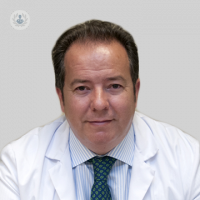endovascular surgery
Written by:My specialty, Angiology and Vascular Surgery, has changed a lot in recent years. The surgical interventions on the aorta for example, had always characterized by large procedures, which entailed a massive assault on medical- surgical patient.
Progressively, and since about 20 years, have been introduced increasingly aggressive techniques. The goal is provide solution to vascular problems ( either dilation, stenosis, obstruction, rupture, dissection ) procedures performed by browsing inside the vessels, both arterial and venous;and therefore are called endovascular.
By endovascular procedures We greatly decrease the aggressiveness of interventions in many ways: fewer incisions, less dissection, less surgical time, shorter hospital stay;therefore, ultimately, fewer complications and lower risk of mortality.
Applications Endovascular Surgery
Unfortunately not all patients can benefit from this type of surgery. Endovascular surgery has still limitations of various kinds.
Some materials used have to be improving gradually. Future research and walk today to biodegradable materials.
There are areas where classical vascular surgery is very well established, with excellent results, which currently endovascular techniques have failed to overcome.
There are vascular lesions, whose complexity (extension, degree of stenosis / obstruction, associated calcification, etc.), advise against the use of endovascular techniques because of some experiences and results so far unsuitable. There are very large aneurysms, especially of the aorta, which may require mixed or hybrid techniques.
In short, is very important to master all the techniques, to identify and choose the most appropriate treatment for each patient.
Endovascular Techniques to treat varicose veins
Of course, the field of varicose veins has also benefited greatly with the irruption of these techniques. Most varicose veins originate from valvular incompetence and reflux of internal / external saphenous vein. The traditional surgery or saphenectomy, is a radical removal of this vein.
Today, endovascular techniques can correct this reflux using devices that navigate inside the vein, as endolaser, radiofrequency or clarivein system.
The system clarivein
This is a chemical associated endovascular technique that simultaneously a set of mechanical ablation and. Since it is not generating heat a thermal ablation ( radiofrequency and as endolaser ) does not require anesthesia or has the potential risk of neurological injury.
In our centers, we can treat any type of varicose vein clarivein combining device and microfoam sclerotherapy, so getting an outpatient technique, very little aggressive, which requires no surgical incisions or anesthesia.




